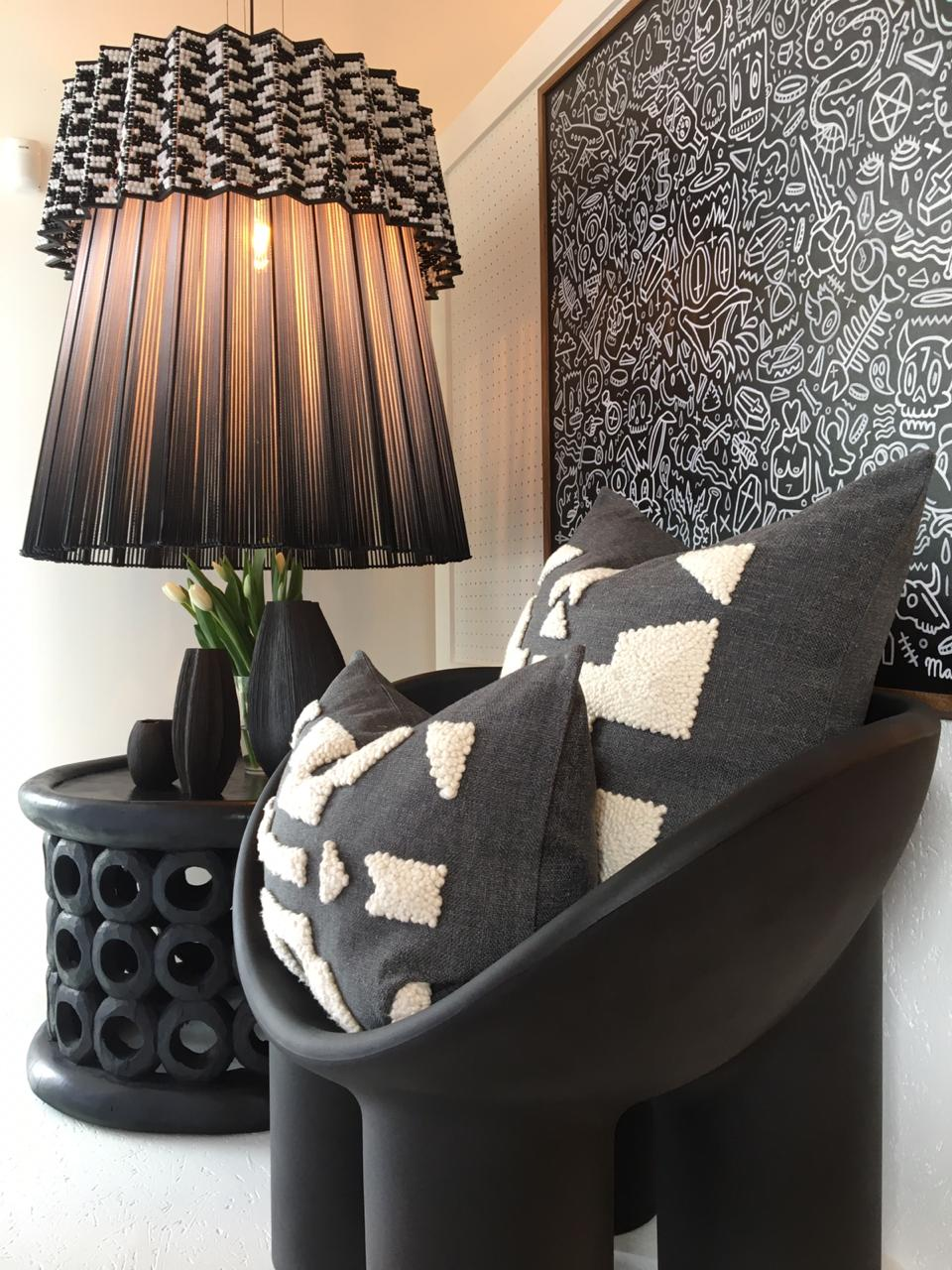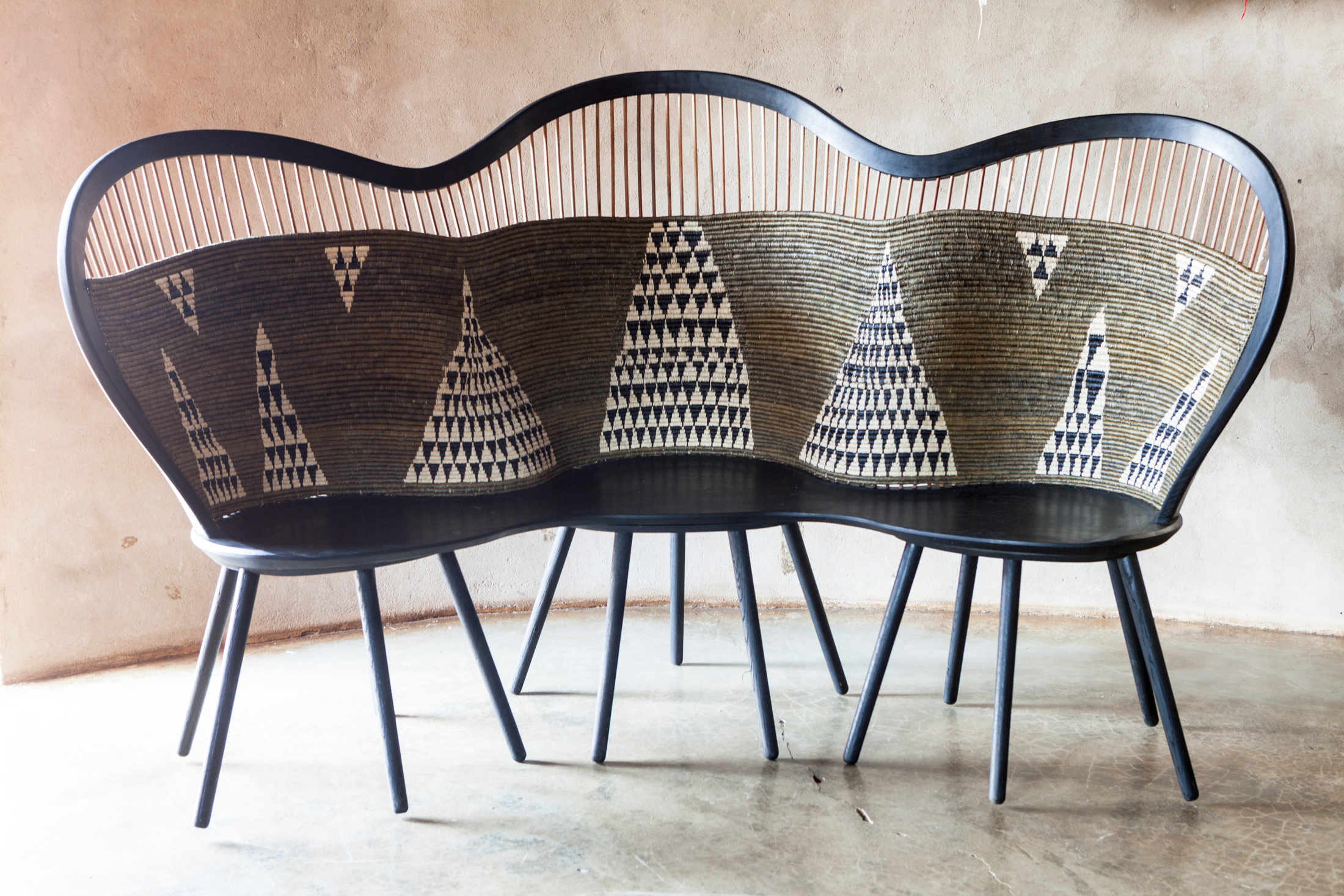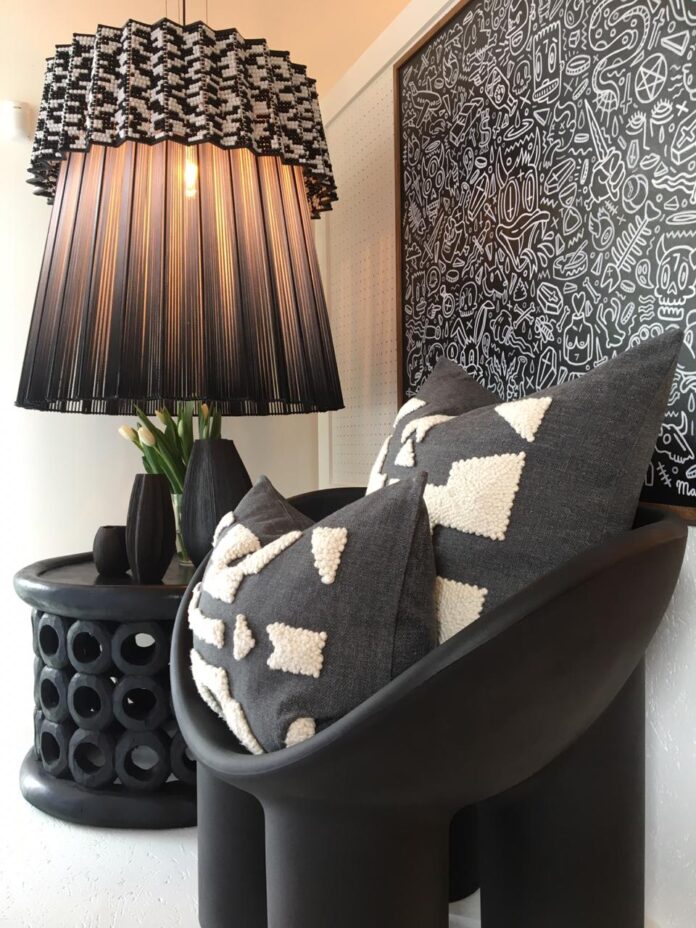[ad_1]
As owner and designer of Mash.T, a premier South African design studio, Thabisa Mjo has a different origin story than many new designers. Nando’s, a South African fried chicken casual restaurant, was hosting a Young Designer Talent Search back in 2015. Despite having never designed anything before, Thabisa entered the contest and, to her surprise and delight, was announced a winner. Her design, the Tutu 2.0 Light, is a pendant light that uses beads and yarn and drawn cord. Its design was inspired by the look of Xibaleni skirts worn by women in the Xitsonga region of South Africa. Now hanging in restaurants across the world, the Tutu 2.0 Light has also won an award for “Most Beautiful Object in South Africa” and is part of the permanent collection of the Museum of Decorative Arts in The Louvre in Paris.
Mash.T is the result of Thabisa’s passion to preserve small businesses and traditional skills in the design field. Bringing quintessential African aesthetics to modern spaces, it’s clear why Thabisa Mjo has been named one of the continent’s top design talents. We caught up with her to talk about her design philosophy, her thoughts on being a woman in the design field, her favorite designs and more.

What is your design philosophy/mission statement?
This is always changing but the consistent theme has been the melding of technology with traditional crafts. I love storytelling, I always have, and I view design as a vehicle to share stories.
What makes for good lighting—is there more to it than simply illuminating a space?
I think there´s more to it than illuminating space. I´m a fashion girl, I enjoy fashion and so I´d like to liken it to having a great outfit on and then the crowning glory, are the accessories such as the shoes, jewelry, a great purse.
What is your design process? Does it start in the studio, or does inspiration strike you in unexpected ways?
I try to be observant and present as I go about my day. All of the interesting things I see when I´m out and about or things I see online, they all sort of percolate in my brain, in my subconscious. And when I am intentional about sitting down and designing something, I then access that memory box and just start playing, essentially. Sometimes inspiration does just come, totally strikes me, the Tutu was like that, it felt like a lightning bolt struck me, I was so excited to put pen to paper and eventually see it materialize. Literal goosebumps. I´m still chasing that feeling.
And then how does something go from an idea to a design to an actual product?
Idea, then sketch, if the idea is translated decently enough on the sketch, we go to renders which is where we tweak until, aesthetically, it looks good. Then technical drawings, then prototyping. Then we test the market, we do this by sending pictures to our regular clients to get a sense of how they respond to the product. If it´s positive, we then launch it.

What is the most unexpected thing you’ve found inspiration in for a project?
Nature, I literally google coral reefs or birds nests, I google things like geometry. Or I´ll see a picture of a painting and I rotate it, look at it upside down, sideways till I see ´something.´
The Hlabisa bench was inspired by a mountain range, for example.
Can you share a favorite design of yours and the story behind it?
Hands down the Tutu light. It´s the very first product I ever designed. It was for a design competition and I was just taking a chance. I won the competition but for me, the real prize was discovering that I have this gift, which I never knew I had. The Tutu opened up my world, my inner world and then the literal material world. Today it´s part of the permanent collection at the Museum of decorative arts in Paris, which in such a cool milestone but also, it´s solidified my design aesthetic, which is the melding of technology with traditional crafts.
What keeps you going? What keeps your creative energy charged? What’s next?
I think my passion to build a scalable design business on the continent of Africa, the opportunity to not only preserve traditional artisanal skills, share our heritage but to also be a vehicle that traditional crafters can use to create income generating opportunities for themselves. Also, the desire to create something that will one day be mentioned alongside the great design masters, something iconic that will outlive me., something that will move the needle. The idea of that is what keeps me energized.

Our March Design event is celebrating Women in Design. Would you like to share any thoughts on being a woman in design?
I think my lived experience as a woman and the way I have been socialized as a woman, works in my favour when designing. My proportions are generous and welcoming, I´m empathetic to the end user, all of the qualities women are sort of socialized to espouse, for better or worse, I believe work in my favour when designing.
The post Thabisa Mjo on Melding Technology with Traditional Crafts and Building a Design Business in South Africa first appeared on The Edit | Lumens.com.
[ad_2]
www.lumens.com










